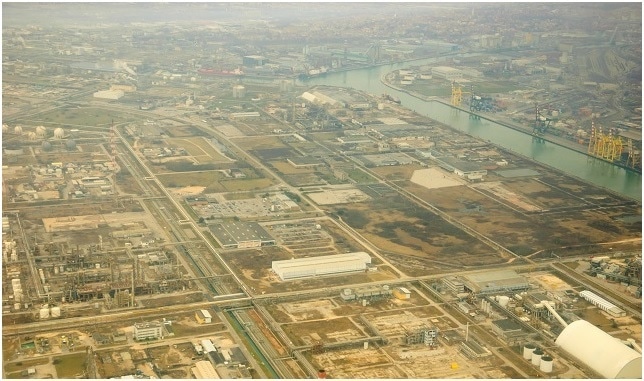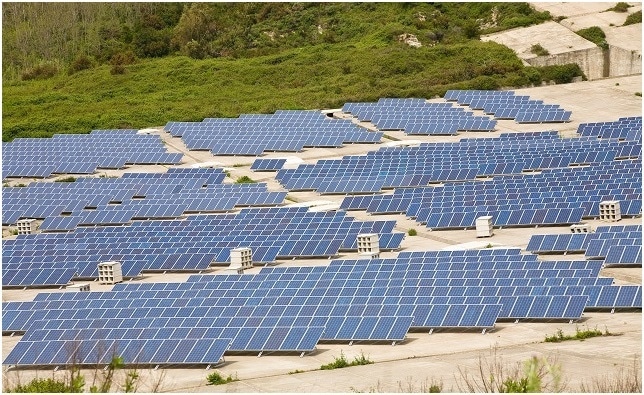
Italy is famous for its large boot-shaped peninsula jutting down into the Mediterranean Sea from Southern Europe. Italy also includes the two nearby islands of Sicily and Sardinia, and dozens of other small Mediterranean islands.
Ecosystems within Italy include the mountainous regions high in the Alps, temperate woodlands, coastal waters, freshwater river systems and shrub lands in the southern part of the country. Generally speaking, Italy has warm, dry summers and mild winters, with higher elevations in northern Italy experiencing colder and wetter winters.
People consider Italy to be divided in half; with the commercial-centers in the north and the agrarian countryside in the south.
Despite a relatively hospitable climate for humans, Italy is largely unsuitable for farming. The country also has no major deposits of coal, oil, minerals or other natural resources. This means that Italy must be a net importer of natural resources to meet its demands.
Major natural gas reserves have been found along the Po River, however, Italy is still a major importer of energy sources, with more than 80 percent of the country’s energy raw materials being imported.
Major manufacturing industries in Italy include precision machinery, motor vehicles, chemicals, pharmaceuticals and electric goods. The country also has booming tourism, fashion and garment industries.
Environmental Issues of Italy
Major environmental issues currently facing Italy include air pollution from energy and heating, transportation and industrial sources, polluted inland waters, acid rain, and insufficient industrial waste treatment and disposal programs.
A 2006 World Health Organization report found significant levels of air pollution (particle size 10 μm or less is PM10) in Italian cities ranged from 26.3 to 61.1 milligrams per cubic meter. The WHO guidelines establish the air quality standard at 20 micrograms per cubic meter, whereas the European Union Air Quality Directive is set at 40 micrograms per cubic meter (daily limit value). The European Environment Agency (EEA) has estimated that more than 66000 people die prematurely due to particulate air pollution. EEA has observed the annual average trend of PM10 in Italy in the period 2012-2015 to be below the threshold levels. Traffic stations continue to have high particulate concentrations.
Top 5 Environment – All you need to know for Italian Presidency
Top 5 Environment – All you need to know for the Italian EU Presidency Video Credits: viEUws
Localized incidents of water pollution have also been reported with some regularity. In 2014, the Mayor of Rome, Ignazio Marino, signed a 10-month ban on the use of public water in two neighborhoods in the Northwest part of the Italian capital after tests showed it was polluted.
A large steel manufacturing plant in Taranto, Italy, is emblematic of the country’s issues concerning industrial emissions. In October 2014, the European Commission formally reprimanded the ILVA steel plant and Italy’s government for not conforming to European industrial emissions regulations. Tests near the plant and Taranto showed heavy pollution of the air, soil, and ground waters.
In Veneto Region, Italy, the ground water, surface water and drinking water was contaminated with polyfluoroalkylated substances (PFAS) (compounds harmful for human health), from a local chemical plant. It exposed approximately 127 000 citizens from the region to the chemical. It wasn’t until the spring of 2017 from the time of discovery in 2013 the contamination crisis was tackled, involving health, environment, political and legal authorities.
Environmental Policies of Italy
Because Italy is a member of the European Union, its environmental policies largely fall under EU environmental legislation.
With respect to air pollution and climate change, Italy is pushing initiatives designed to reduce black carbon emissions, particularly in the transportation sector. Through the Sustainable Mobility Fund, Italy has co-funded nearly 190 projects at a total cost of 195 million Euros. In the last two decades, Italy has decreased the emissions consistently.
Separate waste collection is used for the effective recycling; in 2013, the waste generation has also decreased on average. However, a 2013 report from the Organization for Economic Co-operation and Development (OECD), recommends that Italy’s “water management needs a long term vision, consistent implementation and better governance.” It also reports that Italy is currently looking to push forward with a number of water conservation initiatives, including the evolution of the legal and institutional framework, reforming the water supply systems and improving water sanitation systems.

A bird's eye view of nearby Venice showing significant accumulations of industrial fog in the air. Image credit: Elena Dijours/shutterstock.com
As it recovers from the still-recent global economic collapse, Italy will be looking to incorporate green initiatives into its economic policies, according to the OECD report. These measures are expected to include: “greening” the tax code, (where a smaller share of taxation revenue from income tax and a larger share of revenue from taxes on polluting activities is received) expanding environment-related markets and green trade policies, promoting eco-innovation and investing in green technology.
Italy is also looking to make an impact on the larger European stage with respect to environmental policies. Under the country’s six-month term as President of the European Commission, Italy pushed for higher recycling targets and progress toward the complete elimination of EU landfills, green job growth and the tighter control of emissions from medium-sized combustion plants.
Clean Technology in Italy
Through its recent policies and financial incentives, Italy has made a major push toward embracing solar energy technology.
Italy has impressive growth in the renewable energy sector. Writing in the Wall Street Journal, Agostino Re Rebaudengo, Chairman of the Italian renewable energy association assoRinnovabili, said his country’s green energy incentive scheme has been highly successful and led to cost of photovoltaic systems being reduced by 72 percent from 2008 to 2013.

A set of solar panels in the crater of Lipari Island, Italy. Image Credits: imagesef/shutterstock.com
The organization chairman added that the policies are beginning to bridge the gap between Italy’s import-based energy industry today and a sustainable renewable energy industry in the future.
A Clean Future for Italy?
While current economic factors will have a major influence on how clean technology will progress in Italy, the International Energy Agency’s most recent report on the country made three primary recommendations.
First, the IEA report said Italy should develop a national energy sector consistent with the modern energy market. The IEA report also said Italy needs to continue identifying and addressing deficiencies in its energy infrastructure. Finally, the IEA report said Italy needs to make a major push in trying to fulfil its EU 2020 climate change responsibilities.
Sources and Further Reading
This article was updated on the 7th July, 2018.
Disclaimer: The views expressed here are those of the author expressed in their private capacity and do not necessarily represent the views of AZoM.com Limited T/A AZoNetwork the owner and operator of this website. This disclaimer forms part of the Terms and conditions of use of this website.